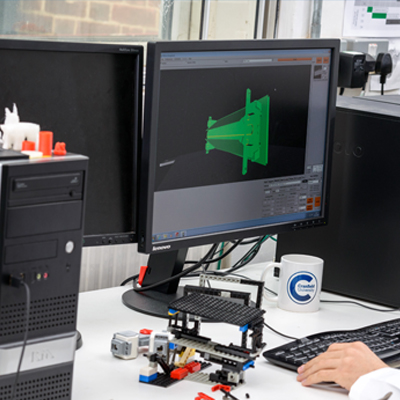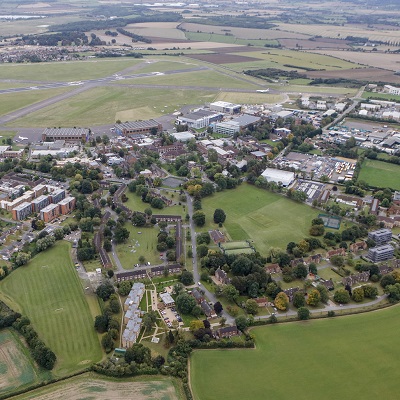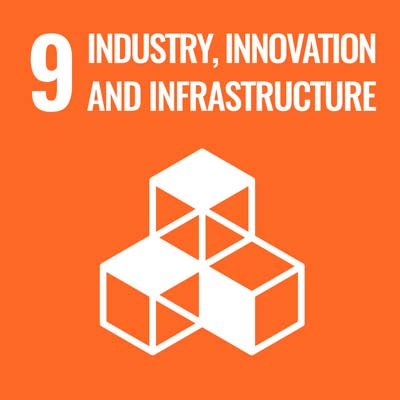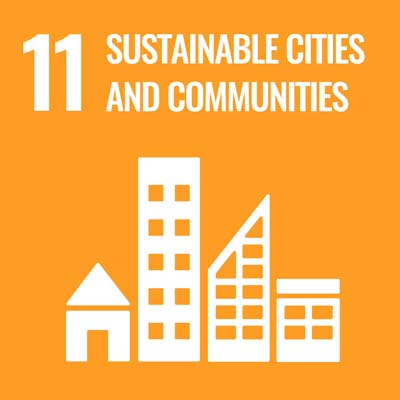Ways to meet us
Overview
- Start dateOctober
- DurationFull-time MSc - one year, Part-time MSc - up to three years, Full-time PgCert - one year, Part-time PgCert - two years, Full-time PgDip - one year, Part-time PgDip - two years
- DeliveryTaught modules 40%, Group project 20%, Individual project 40%
- QualificationMSc, PgDip, PgCert
- Study typeFull-time / Part-time
- CampusCranfield campus
Who is it for?
We welcome students from a range of backgrounds, including undergraduate degrees in science, technology, engineering and mathematics. We also welcome students who have spent time in industry and are looking to further their education.
Why this course?
The MSc in Aerospace Manufacturing combines Cranfield's long standing expertise for delivering high-quality Masters' programmes in both aerospace and manufacturing. You will learn from a range of modules, from how to assemble aircraft, through to manufacturing and systems engineering, as well as developing your management capabilities. Through elective modules and project work, you will be able to tailor the learning experience to your unique areas of interest, helping you to develop a competitive edge in the employment market.
The course receives strong support from the global aerospace industry, both from the Original Equipment Manufacturers (OEM) such as Airbus and Rolls-Royce, as well as their tiers of supplier. We ensure that there is a strong emphasis on applying the knowledge that you acquire during the course in the industrial environment in which you will work, and all teaching is in the context of industrial application.
As a student, you will benefit from our wide range of equipment, analysis tools and specialist software packages. The course objectives are achieved through a carefully integrated and structured series of eight one-week assessed modules, a group project and an individual project.
Informed by industry
Our courses are designed to meet the training needs of industry and have a strong input from experts in their sector. Students who have excelled have their performances recognised through course awards. The awards are provided by high profile organisations and individuals, and are often sponsored by our industrial partners. Awards are presented on Graduation Day.
Course details
The course comprises eight modules (five compulsory and three electives), a group project and an individual project.
The modules include lectures, workshops, case studies, tutorials and company visits. Students need to complete a mix of modules that are fundamental to aerospace manufacturing systems and modules that are technology related.
Course delivery
Taught modules 40%, Group project 20%, Individual project 40%
Group project
The group project experience is highly valued by both students and prospective employers. Teams of students work to solve an industrial problem. The project applies technical knowledge and provides training in teamwork and the opportunity to develop non-technical aspects of the taught programme. Part-time students can prepare a dissertation on an agreed topic in place of the group project.
Industrially orientated, our team projects have support from external organisations. As a result of external engagement Cranfield students enjoy a higher degree of success when it comes to securing employment. Prospective employers value the student experience where team working to find solutions to industrially based problems is concerned.
Individual project
The individual thesis project, usually in collaboration with industry, offers students the opportunity to develop their research capability, depth of understanding and ability to provide solutions to real problems in aerospace manufacturing production systems.
Modules
Keeping our courses up-to-date and current requires constant innovation and change. The modules we offer reflect the needs of business and industry and the research interests of our staff and, as a result, may change or be withdrawn due to research developments, legislation changes or for a variety of other reasons. Changes may also be designed to improve the student learning experience or to respond to feedback from students, external examiners, accreditation bodies and industrial advisory panels.
To give you a taster, we have listed the compulsory and elective (where applicable) modules which are currently affiliated with this course. All modules are indicative only, and may be subject to change for your year of entry.
Course modules
Compulsory modules
All the modules in the following list need to be taken as part of this course.
Operations Management
| Aim |
To introduce you to the core factors of managing operations and the concept of flow in operations. |
|---|---|
| Syllabus |
• An introduction to manufacturing organisations and functions. • The theory of operations, flow in manufacturing and what enables/inhibits it. • Order winners, Order qualifiers, and competitive priorities. • Key Performance Indicators in manufacturing. • Product/Process matrix, facility layouts, production strategies, product families. • Customer Demand and capacity planning, and standardization. • Process flow diagrams, and value stream maps. • S&OP, Master Production Scheduling, BOM, and scheduling rules. • Push vs Pull production. • Information systems; MRP, MPRll, ERP, and Kanban systems. • Maintenance management strategies. • Dimensions of Quality, Quality management frameworks, and the cost of quality. • Roles of inventory; inventory management systems and measures. • Lean Manufacturing. • Class discussion of cases, exercises, and videos to support this syllabus. |
| Intended learning outcomes |
On successful completion of this module you will be able to: 1. Discuss the importance of the operations functions of an organisation and how operations performance can impact the success of the whole organisation. 2. Assess production and capacity management strategies that can be deployed to meet customer demand for products and services. 3. Assess the importance of inventory, maintenance, and quality management systems in achieving high levels of operational performance. 4. Determine the role of information in planning, control, and scheduling, including the role of IT systems. 5. Critique the different attributes of the Lean Production System and how they apply to contemporary operational contexts. |
Manufacturing Systems Engineering
| Aim |
|
|---|---|
| Syllabus |
• Introduction to modelling: taxonomy, overview of methods and techniques. • Design of manufacturing layouts. • Manufacturing layout Manufacturing Systems modelling using discrete-event simulation, Systems dynamics and Agent-based simulation techniques and methodologies. • Case study Analysis of manufacturing systems using simulation. |
| Intended learning outcomes |
On successful completion of this module you should be able to: 1. Differentiate the applicability of different modelling approaches applicable in manufacturing businesses. 2. Assess how production layout and system design influence manufacturing system performance. 3. Design a graphical simulation model using an industry-leading discrete-event simulation tool to feed to the experimental testing procedure. 4. Appraise the effectiveness of manufacturing layout configurations. 5. Evaluate the potential benefits and limitations of using AI in the early design of manufacturing systems and integrating AI methods into various design scenarios. |
Sustainable Aerospace Manufacturing Business
| Aim |
The aim of this module is to provide you with a holistic understanding of sustainable manufacturing, materials and processes in the context of aerospace manufacturing. Provide an understanding of the standards the regulations as well as the design criteria for manufacturing parts, components and structures of airframes and engines. Introduce the key skills required to address multi-faceted problems of aerospace manufacturing processes and operations. |
|---|---|
| Syllabus |
• Overview of Aerospace Manufacturing business, state of the art and future trends. • Design Requirements for airframes and aero-engines. • Standards and Regulations in aerospace industry. • Aerospace Materials and Manufacturing Processes. • Sustainable and Digital Manufacturing concepts and tools. |
| Intended learning outcomes |
On successful completion of this module you should be able to: 1. Appraise standards and regulations governing aerospace manufacturing processes, materials and business. 2. Evaluate design requirements for manufacturing of airframes and aero-engines. 3. Select and compare different materials and processes for sustainable aerospace manufacturing operations. 4. Analyse and implement sustainable manufacturing concepts and digital manufacturing tools in aerospace manufacturing industry. |
Supply Chain Management
| Aim |
To introduce you to the wider issues surrounding the management and optimisation of supply chains. |
|---|---|
| Syllabus |
• Supply chain concepts. • Supply chain strategy. • Relationship management. • Supplier Selection and Evaluation. • Supplier Sustainability. • Supply chain Planning. • Design & Operating SC. • Outsourcing Product Design and Manufacturing. |
| Intended learning outcomes |
On successful completion of this module you will be able to: 1. Evaluate issues surrounding the development of the right supply chain strategy for the business / product groups. 2. Create strategies for managing the information flows in a supply network in order to reduce the bullwhip effect and the challenges of accurate demand and forecast planning. 3. Evaluate the challenges with improving performance of supply networks and gain familiarity with the application of a variety of supply chain tools to help in the re-design of the SC. 4. Apply criteria in the sourcing, evaluation and validation of suitable providers of parts, design and manufacturing services for the supply of a complex engineered product. 5. Critically evaluate the impact of digital data and intelligent agents (AI) in Supply Chain 4.0. |
Aircraft Assembly
| Aim |
To develop your understanding of aircraft assembly methods and techniques that are effective and efficient and at the same time meet quality and safety requirements. |
|---|---|
| Syllabus |
• Assembly jigs and fixtures. • Aircraft assembly layouts and processes. • Automated fastening machines. • Sealants and adhesives. • Automation in aircraft assembly. • Application of metrology. • Quality processes. • Certification and validation. • Technology introduction. |
| Intended learning outcomes |
On successful completion of this module you should be able to: 1. Apply comprehensive knowledge of manufacturing flow and layout to aircraft assembly. 2. Demonstrate understanding of aircraft structures (fuselage, wing). 3. Appraise different advanced joining techniques used in aircraft assembly. 4. Formulate a holistic approach to analysis and design of aircraft assembly processes and their introduction. 5. Understand the future technologies that will influence the assembly of next generation aircraft. |
Elective Modules
Additive and Subtractive Manufacturing Technologies
| Aim |
To provide you with an understanding of the principles behind some of the most recent developments in the processing of high value added components. There is a strong emphasis on high efficiency and reduced cost in the manufacture of high volume and/or high value added parts using the latest technology based around advanced fabrication, machining processes and additive techniques. The module will cover the physical principles, operating characteristics and practical aspects related to these key technologies. |
|---|---|
| Syllabus |
• Abrasive machining processes and practice • Non-conventional machining including photochemical machining and associated metal removal and addition processes. • Micro machining and micro moulding. • Machine tool components and machine-materials interactions, metrology. |
| Intended learning outcomes |
On successful completion of this module you should be able to:
1. Critically review recent developments in machining and fabrication processes for the production of engineering components and identify their main areas of application and limitations. 2. Describe and apply the relationships between material properties, processing conditions, metrology and component service performance. 3. Analyse how the physical principles behind the operation of these processes can be used to monitor process capability and performance. 4. Apply design rules and fabrication techniques to manufacture micro components. 5. Assess different routes for the high volume manufacture of micro components. |
Composites Manufacturing for High Performance Structures
| Aim |
To provide a detailed awareness of current and emerging manufacturing technology for high performance composite components and structures and an understanding of materials selection and the design process for effective parts manufacturing. |
|---|---|
| Syllabus |
• Practical demonstrations – lab work. • Overview of established manufacturing processes, developing processes, automation and machining. • Introduction to emerging process developments; automation, textile preforming, through thickness reinforcement. • Design for manufacture, assembly techniques and manufacturing cost. • Case studies from aerospace, automotive, motorsport, marine and energy sectors. |
| Intended learning outcomes |
On successful completion of this module you should be able to:
|
Failure of Engineered Assets
| Aim |
To provide an understanding of why engineered assets and structures fail and how their failures can be analyzed and predicted at system and component levels. |
|---|---|
| Syllabus |
• Definition of failure, complexities in defining failures at different levels and scenarios. • Overview of failure in mechanical and electrical components, systems and assets. • Failure of materials and structures including Atomic insight of damage in materials, stress concentration, critical energy release rate, Griffiths approach, stress intensity and fracture toughness standards and tutorials. • Fatigue in structures and machine components, Paris Law, Crack propagation and useful life estimation. • Asset Failures, system and sub-system interdependencies, fault and usage management systems, Economic vs. Severity matrix for decision making. • Failure analysis techniques and Tutorials : FMEA, FMECA, FTA, RCFA. |
| Intended learning outcomes |
On successful completion of this module you should be able to: 1. Appraise engineered asset failures and its complexities in defining at different levels and scenarios. 2. Explain the principles of Linear Elastic Fracture Mechanics (LEFM) in structures and demonstrate their application to cracks in brittle, ductile and fibre composites through calculation of static failure conditions. 3. Apply fracture mechanics to failure of cracked structures under cyclic loads and evaluate and predict service lives of structures. 4. Assess system and sub-system interdependencies to decide asset failure. 5. Evaluate asset failures by using failure analysis techniques. |
Manufacturing Strategy
| Aim |
To develop your skills to analyse and manage the direction of a business, to design and develop manufacturing strategy to deliver competitive advantage and plan effective deployment of a strategy. |
|---|---|
| Syllabus |
• Benchmarking of manufacturing system performance. • Manufacturing strategy in business success. • Strategy formation and formulation, leading on to system design. • Structured strategy formulation and system design methodologies. • Approaches to strategy formulation in differing business contexts. • Realisation of new strategies/system designs, including approaches to implementation. • Case study on design of competitive manufacturing strategy. |
| Intended learning outcomes |
On successful completion of this module you should be able to: 1. Distinguish manufacturing strategy from corporate strategy. 2. Demonstrate manufacturing strategy formulation. 3. Apply a structured methodology to create a competitive manufacturing strategy. 4. Assess the impact of a proposed manufacturing strategy on business performance. |
Metal Additive Manufacturing Processes
| Aim |
|
|---|---|
| Syllabus |
• Fundamentals of arc processing. • Fundamental of laser/beam processing. • Different established AM processes. • Metal AM processes. • AM process selection. • Net and near net shape manufacture. |
| Intended learning outcomes |
On successful completion of this module you should be able to: |
Operations Analysis
| Aim |
To develop a rigorous and logical application of tools and techniques to design and control operational systems to improve speed, quality, and cost, and achieve environmentally responsible operations. |
|---|---|
| Syllabus |
• Six Sigma, Process capability, common and special cause variability, control charts, acceptance sampling. • System thinking and methods for decision-making to enable the system change. • Lean Manufacturing Frameworks such as DMAIC. • Methods for customer/business requirements identification, data collection and data validation. • Analysis of systems to produce simple models. PFMA. Business process fundamentals and the process review. Improvement procedures, modelling methods and process models. Performance measurement. |
| Intended learning outcomes |
On successful completion of this module you should be able to: 2. Demonstrate understanding of the current state of the process and collect baseline information on process speed, quality, and costs exposing underlying causes of problems by applying process flow tools and methods for data collection and validation. 3. Determine potential and root causes of variation that have the most effect on the critical process results, such as process lead time and process cycle efficiency, by demonstrating an understanding of Six Sigma and Statistical Process Control tools and techniques. 4. Identify opportunities for fully functional process improvement that will help achieve the project goals aligned with environmentally responsible operation by demonstrating understanding of tools and techniques for selection and testing solutions. 5. Implement the chosen solutions and explain how to develop, analyse and validate appropriate process control. |
Welding Processes and Equipment
| Aim |
|
|---|---|
| Syllabus |
|
| Intended learning outcomes |
On successful completion of this module you should be able to:
|
Teaching team
You will be taught by experts from Cranfield and industry with substantial experience in teaching, project supervision, research and consultancy. The academics have published in leading journals and books and have worked closely with world-class manufacturers. The Course Director for this programme is Dr Konstantinos Georgarakis.
Accreditation
The Aerospace Manufacturing MSc is accredited by the Institution of Mechanical Engineers (IMechE), the Royal Aeronautical Society (RAeS) and Institution of Engineering & Technology (IET) on behalf of the Engineering Council as meeting the requirements for further learning for registration as a Chartered Engineer (CEng).
Candidates must hold a CEng accredited BEng/BSc (Hons) undergraduate first degree to show that they have satisfied the educational base for CEng registration.
Please note accreditation applies to the MSc award, PgDip and PgCert (if offered) do not meet in full the further learning requirements for registration as a Chartered Engineer.
Your career
This qualification takes you on to a wide range of aerospace manufacturing roles such as management, operations, logistics and technology-related functions within global aerospace manufacturing organisations. Many graduates find employment with one of their project sponsors.
Students from this course have gone into roles including:
| Aeronautical Engineer |
| Aerospace Manufacturing Engineer |
| Composite Manufacturing Engineer |
| Mechanical and automation Engineer |
| Mechanical Engineer |
| Production Leader |
| Zero Emission Prototype Manufacturing |
Companies that employ our students include:
| Accenture | Air France |
| Airbus | Collins Aerospace |
| Electrolux | Deloitte Consulting |
| Turkish Aerospace | Rolls-Royce |
| Tyrol Air Ambulance |
Explore careers in manufacturing with our 'Making an impact in the manufacturing industry' brochure. This brochure highlights journeys taken by professionals in the manufacturing industry through different roles and technologies, as well as providing some key tips to guide you along the way.
Cranfield’s Career and Employability Service is dedicated to helping you meet your career aspirations. You will have access to career coaching and advice, CV development, interview practice, access to hundreds of available jobs via our Symplicity platform and opportunities to meet recruiting employers at our careers fairs. Our strong reputation and links with potential employers provide you with outstanding opportunities to secure interesting jobs and develop successful careers. Support continues after graduation and as a Cranfield alumnus, you have free life-long access to a range of career resources to help you continue your education and enhance your career.
Part-time route
We welcome students looking to enhance their career prospects whilst continuing in full-time employment. The part-time study option that we offer is designed to provide a manageable balance that allows you to continue employment with minimal disruption whilst also benefiting from the full breadth of learning opportunities and facilities available to all students. The University is very well located for visiting part-time students from all over the world and offers a range of library and support facilities to support your studies.
As a part-time student you will be required to attend teaching on campus in one-week blocks which typically run during the period from October to March depending on the course, followed by independent study and project work where contact with your supervisors and cohort can take place in person or online.
We believe that this setup allows you to personally and professionally manage your time between work, study and family commitments, whilst also working towards achieving a Master's degree.
How to apply
Click on the ‘Apply now’ button below to start your online application.
See our Application guide for information on our application process and entry requirements.
This course has helped me to stand out from others as the majority of master’s courses in Europe are generic engineering, whereas here you have much more specific courses that can help you to specialise. I think that’s something that companies really appreciate which has in turn has benefited my career.
Cranfield is the key that can open you the door to the real life environment and if you are willing to work hard to show the world what you are capable of, they will see your true potential and bet for you.
What I have enjoyed about Cranfield University so far is definitely the people! People at Cranfield, whether it's the academic staff, non-academic staff or students, they make Cranfield better.
I really like the structure of the course and the lecturers. I completed my undergrad at another university in the UK and throughout the 3 years I only met the course director probably once or twice. However, it is very different here with my current course director, Dr. Konstantinos Georgarakis. As the course rep, he is always open to my concerns, suggestions and my colleagues find him very approachable.
My advice to future students would be to definitely pursue it! Postgraduate studies provide a vital bridge in the gap between what you learn in academia in your undergraduate courses and your future job in industry. It’s an experience where you’re technically challenged but at the same time given the freedom and opportunity to own your work, where you are the direct driver of your results.
I had considered plenty of options across Europe for my Masters. What made me ultimately choose Cranfield is its unique blend of learning styles and the course structure itself. I found that no University really matched the specific Aerospace Manufacturing modules and experiences Cranfield provided. Cranfield is full of buzz when it comes to STEM, so one of the best things was meeting people doing different MScs, PhDs or postdocs and learning all about their research and visiting labs etc.
A highlight from my time at Cranfield has definitely been the friends that I have made. The quiet surroundings at Cranfield Campus leads you to form meaningful friendships that can potentially last a lifetime!



















.ashx?bc=white&iar=true&w=400&h=400&la=en&hash=E0D1B7B080A740B464A93976F0E3D8CA7CA1D8E9)






